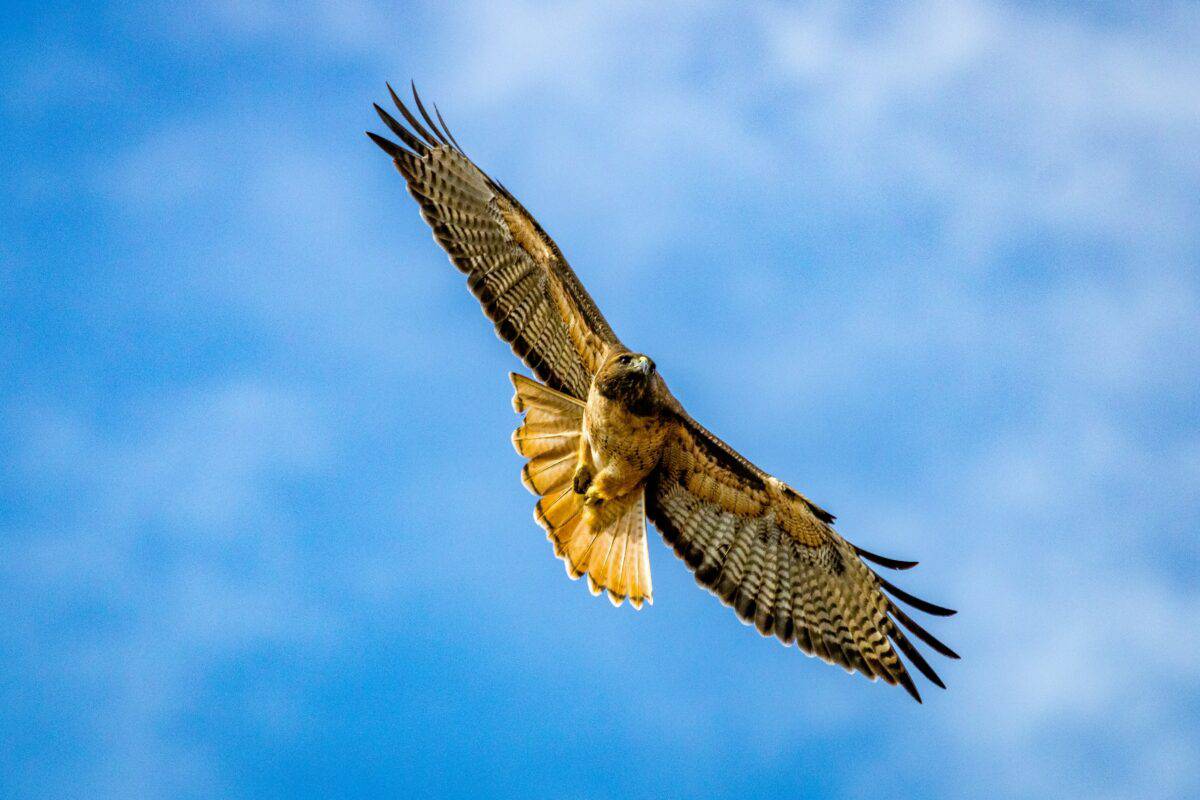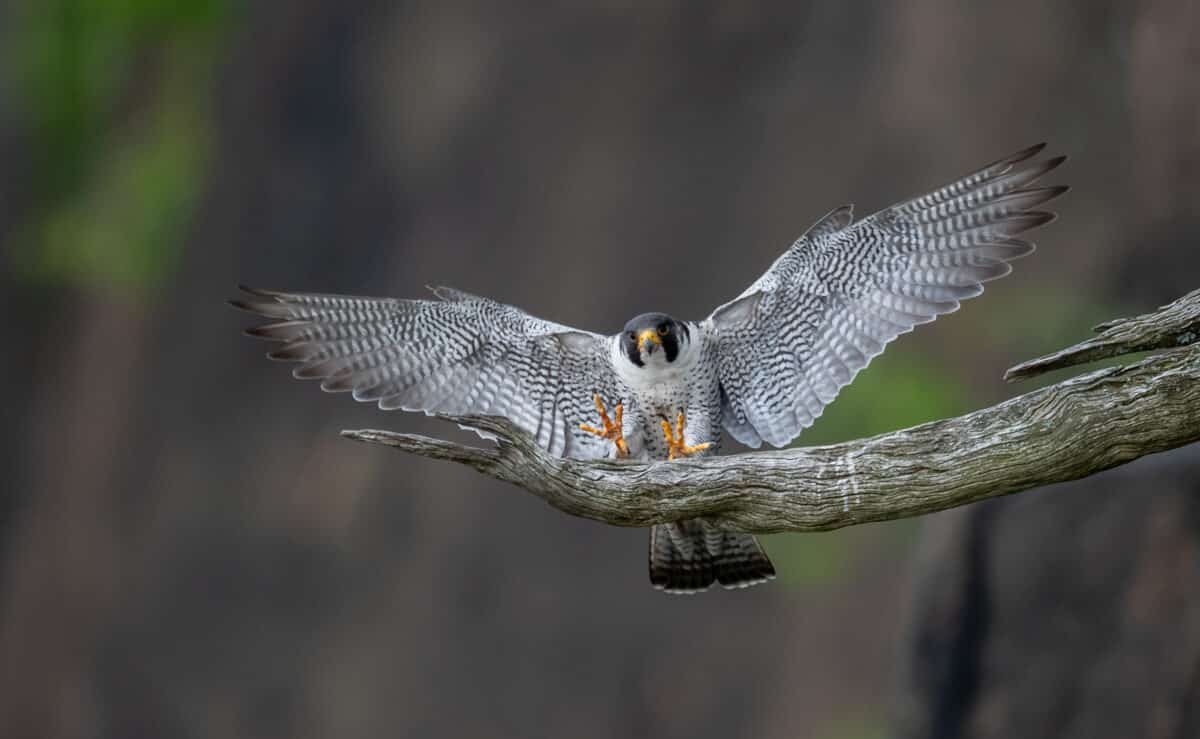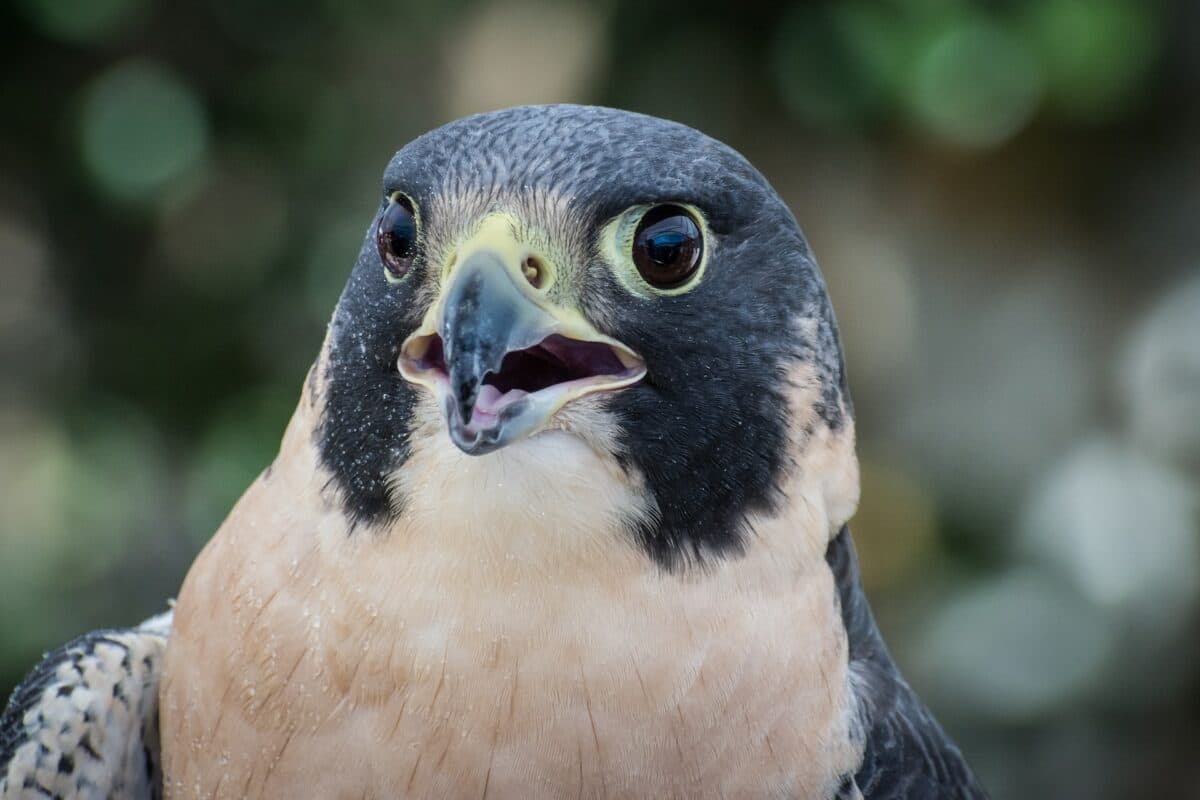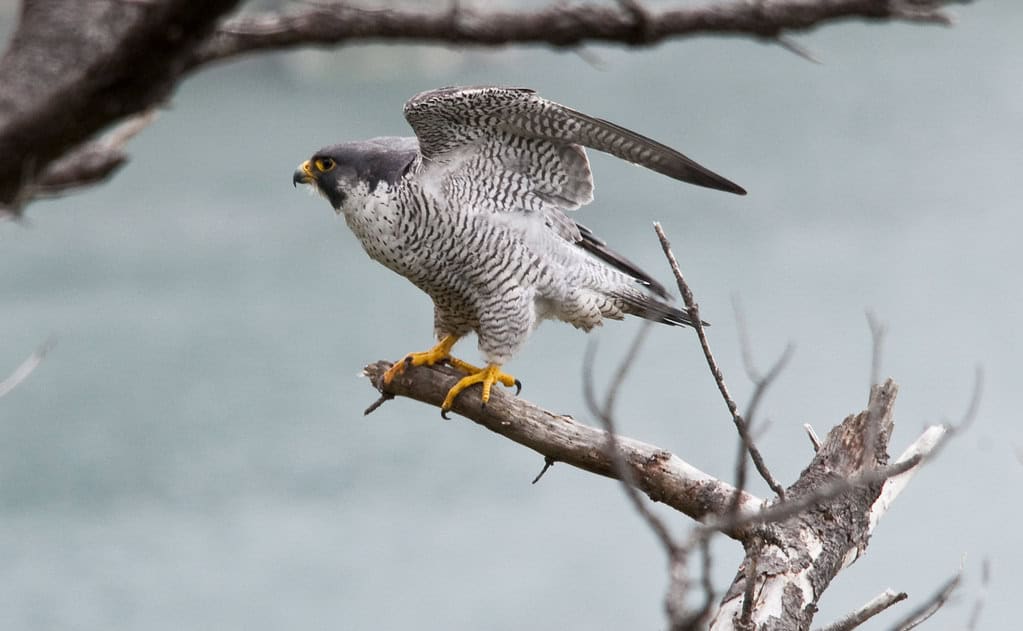North America hosts some of the most remarkable animal migrations on the planet. These journeys span thousands of miles as creatures traverse continents and cross borders in search of food, breeding grounds, and suitable seasonal habitats. While many migrations impress with their distance or the obstacles overcome, one stands out for its sheer velocity – the peregrine falcon’s biannual journey. This raptor’s migration combines breathtaking speed with remarkable distance, making it North America’s fastest animal migration. In this article, we’ll explore this extraordinary phenomenon, examining the peregrine’s incredible flight capabilities, migration patterns, and the physiological adaptations that make this record-breaking journey possible.
The Peregrine Falcon: North America’s Speed Champion

The peregrine falcon (Falco peregrinus) holds the undisputed title of fastest animal on Earth, capable of reaching speeds exceeding 240 mph (386 km/h) during hunting dives called stoops. However, its migration speed, while not quite as dramatic, is equally impressive in the avian world. Peregrines can sustain speeds of 40-60 mph (64-97 km/h) during long-distance flights, allowing them to cover up to 600 miles (965 km) in a single day under ideal conditions. This combination of velocity and stamina makes the peregrine’s seasonal journey the fastest animal migration in North America by average travel speed. The falcon’s name itself hints at this remarkable capacity – “peregrine” derives from the Latin word “peregrinus,” meaning “wanderer” or “pilgrim.”
The Migration Route: Continental Journeys

Peregrine falcons in North America undertake biannual migrations that span the continent, with routes varying based on subspecies and breeding locations. Arctic-nesting populations make some of the longest journeys, traveling from the northern reaches of Alaska and Canada to wintering grounds as far south as Argentina – a one-way distance exceeding 9,000 miles (14,500 km). Western populations typically follow routes along the Pacific coast, while eastern peregrines travel along the Atlantic Flyway. Many birds cross the Gulf of Mexico in a single flight, showcasing their extraordinary endurance. Tracking studies have revealed that some individuals travel up to 15,500 miles (25,000 km) annually when accounting for both spring and fall migrations, making this not only the fastest but also one of the longest migrations in North America.
Physiological Adaptations for Speed

The peregrine falcon’s body is a marvel of biological engineering, specifically evolved for high-speed flight. Their streamlined silhouette features a compact body with pointed wings that can alternate between a wide cruising position and a tucked, aerodynamic shape for maximum velocity. The falcon’s powerful pectoral muscles comprise nearly 20% of its body weight, providing exceptional propulsion. Their respiratory system includes air sacs that supplement their lungs, allowing for efficient oxygen uptake even during strenuous migration flights. Perhaps most remarkable is the peregrine’s cardiovascular system, featuring a proportionally larger heart than most birds and a higher concentration of oxygen-carrying red blood cells that increase dramatically before migration periods. These adaptations work in concert to create North America’s premier avian athlete, capable of sustaining high speeds for extended periods during their continental journeys.
Timing and Seasonal Triggers

The peregrine’s migration follows a predictable annual schedule, with most North American populations beginning their southward journey in late August through October and returning northward between February and May. Unlike some migratory species that respond primarily to food availability, peregrines’ migration is more closely tied to daylight cycles. The changing photoperiod triggers hormonal shifts that initiate migratory restlessness, or “zugunruhe,” prompting the birds to begin their journey. This timing ensures they reach breeding territories in spring when prey is becoming abundant, and depart before winter scarcity sets in. Weather conditions significantly influence daily travel, with peregrines taking advantage of tailwinds to maximize their already impressive speed. Researchers have noted that climate change appears to be shifting these traditional timing patterns, with some populations beginning migration slightly earlier in fall and later in spring than historical records indicate.
Hunting on the Wing: Feeding During Migration

Unlike some migratory birds that build up substantial fat reserves before departure, peregrine falcons hunt actively throughout their journey. This strategy allows them to travel light, maintaining their aerodynamic advantage for maximum speed. Peregrines primarily target medium-sized birds caught in flight, with migration routes often following those of their prey species. During migration, they’ve been observed hunting at dawn and dusk while spending midday hours soaring on thermal currents to conserve energy. This ability to “refuel” on the go is crucial to maintaining their rapid pace across thousands of miles. Research indicates migrating peregrines consume approximately 25% more calories daily than during non-migration periods, typically capturing 1-2 prey items per day while en route. Their hunting success rarely drops below 70% even during migration, demonstrating remarkable efficiency that keeps their journey moving swiftly forward.
Navigation Systems and Orientation

The peregrine falcon’s ability to navigate across continents at high speed relies on multiple sophisticated biological systems. Like many migratory birds, peregrines possess magnetoreception – the ability to detect Earth’s magnetic field through specialized proteins in their eyes and beak. This magnetic compass is complemented by celestial navigation using the sun by day and stars by night. Research suggests peregrines also utilize visual landmarks, particularly along coastlines, mountain ranges, and river valleys, which serve as highways in the sky. First-year peregrines making their initial migration appear to follow a genetically programmed direction and distance, while adults refine routes based on experience. Remarkably, tracking studies show migrating peregrines maintain nearly straight-line efficiency despite traveling at speeds that would make navigation challenging for most species. This navigational precision helps maintain their status as North America’s fastest migrators by eliminating wasted time and energy on meandering routes.
Recovery From Near Extinction

The peregrine falcon’s impressive migration nearly disappeared from North America entirely due to widespread DDT pesticide use in the mid-20th century. By 1970, the eastern peregrine population had been completely extirpated, and western populations had declined by an estimated 80-90%. The pesticide caused thinning of eggshells, resulting in reproductive failure. Following DDT’s ban in 1972 and an ambitious captive breeding and release program, peregrines have made a remarkable recovery. By 2016, North American populations had rebounded to approximately 3,000 breeding pairs from their nadir of just 324 pairs. This conservation success story has restored North America’s fastest migration, with tracking studies confirming that modern peregrines follow similar routes and maintain the impressive speeds documented historically. The peregrine’s recovery represents one of wildlife conservation’s greatest achievements and ensures future generations can witness this extraordinary migration phenomenon.
Comparing Speeds: Other Fast Migrants

While the peregrine falcon holds the crown for North America’s fastest migration, several other species deserve honorable mentions. The ruby-throated hummingbird, weighing just 3-4 grams, crosses the Gulf of Mexico in a non-stop 18-22 hour flight at speeds approaching 30 mph (48 km/h) – remarkable considering its tiny size. Swainson’s hawks migrate from North America to Argentina at speeds averaging 40 mph (64 km/h) during active flight. Among mammals, pronghorn antelope make seasonal migrations in Wyoming at sustained speeds of 35 mph (56 km/h), though over much shorter distances than avian migrants. When comparing migration speeds, it’s important to distinguish between maximum velocity (where peregrines’ 240+ mph dives stand uncontested) and sustained migration speed, where the peregrine’s 40-60 mph cruise still outpaces all North American competitors. The falcon’s combination of velocity and distance traveled puts it in a class by itself among the continent’s migratory athletes.
Tracking Technology Reveals Migration Secrets

Our understanding of the peregrine falcon’s record-setting migration has been revolutionized by modern tracking technology. Early studies relied on traditional banding, providing only departure and arrival data without insights into the journey itself. The development of lightweight satellite transmitters in the 1990s allowed researchers to track peregrines in real-time, revealing precise routes, speeds, and stopover locations. Modern GPS transmitters weighing less than 22 grams can record a bird’s position every few minutes with accuracy within meters, while also monitoring altitude, speed, and even body temperature. These advances have confirmed the peregrine’s exceptional migration velocity and uncovered surprising details – such as individuals reaching altitudes exceeding 11,000 feet (3,353 meters) while crossing mountain ranges and maintaining flight speeds of 50+ mph (80+ km/h) for hours at a time. Researchers at the Cornell Lab of Ornithology and Falcon Research Group continue deploying next-generation trackers to further unravel the mysteries of North America’s fastest animal migration.
Urban Adaptations and Migration Changes

Peregrine falcons have demonstrated remarkable adaptability by establishing urban populations across North America, nesting on skyscrapers, bridges, and other human structures that mimic their natural cliff habitats. These urban peregrines show fascinating differences in their migration patterns compared to their wild counterparts. Studies tracking city-dwelling peregrines reveal that many urban birds migrate shorter distances or have become completely non-migratory, particularly in southern regions with year-round prey availability. Those that do migrate often travel at similar speeds to wild peregrines but cover less total distance. This behavioral plasticity illustrates the species’ remarkable ability to adapt while maintaining their physical capabilities for fast flight. Research indicates that urban peregrines still experience physiological migration readiness, showing increased food consumption and restlessness during traditional migration periods even when they remain in place – suggesting these adaptations are recent and still evolving as the species responds to human-altered environments.
Climate Change Impacts on Migration Speed

Climate change is beginning to alter the peregrine falcon’s migration patterns in subtle but significant ways. Long-term studies comparing historical and current migration data show that average migration speeds have increased by approximately 3-5% over the past three decades, primarily due to changing atmospheric conditions. Warming temperatures have intensified certain weather patterns, creating stronger tailwinds that benefit northbound spring migrants. However, these same changes have made fall migration more challenging, with peregrines encountering more frequent headwinds and severe weather events that can temporarily halt their journey. Researchers predict that continued climate change may create more variable migration timing and potentially reduce the impressive average speeds that currently make the peregrine North America’s fastest migrant. The falcon’s ability to adapt to these changing conditions will depend on their behavioral flexibility and the resilience of their prey species, which are experiencing their own climate-driven distribution shifts.
Conservation Challenges for Swift Migrants

Despite their impressive recovery, peregrine falcons and their record-setting migration still face significant conservation challenges. Wind energy development along migration corridors presents collision risks, particularly as turbines grow taller and intersect with flight paths. Light pollution disorients night-migrating peregrines, potentially reducing their navigational efficiency and overall migration speed. Habitat loss at critical stopover sites forces birds to travel farther between suitable resting locations, reducing their average velocity. Perhaps most concerning is the emergence of new environmental contaminants, including certain flame retardants and perfluorinated compounds that bioaccumulate in the food chain and have been detected in peregrine tissue samples. Conservation efforts to preserve North America’s fastest migration now focus on protecting migration corridors through international agreements like the Migratory Bird Treaty Act and creating “dark sky” initiatives in key flyway regions. The peregrine’s continued success will require coordinated conservation across the entire migration route spanning multiple countries and ecosystems.
Conclusion: The Continuing Story of Nature’s Speed Champion

The peregrine falcon’s migration represents one of North America’s most extraordinary natural phenomena, combining unmatched speed with remarkable distance and navigational precision. As we’ve explored, this fastest of all animal migrations showcases evolution’s capacity to produce biological marvels – from the falcon’s aerodynamic adaptations to its sophisticated navigation systems. The peregrine’s recovery from near-extinction demonstrates both the devastating impact humans can have on natural systems and our capacity to reverse this damage through dedicated conservation efforts. As climate change and other human activities continue to reshape the continent, the future of this record-setting migration remains uncertain but hopeful. By understanding and protecting the peregrine falcon’s remarkable journey, we honor not just a speed record, but a living embodiment of wildness that transcends borders at a pace that still leaves scientists and nature enthusiasts in awe.
- The Biggest Freshwater Fish Ever Discovered - August 25, 2025
- A Volcano Eruption Reveals Thousands of Hidden Sea Creatures - August 25, 2025
- How Golf Courses Impact Local Wildlife — For Better or Worse - August 25, 2025

